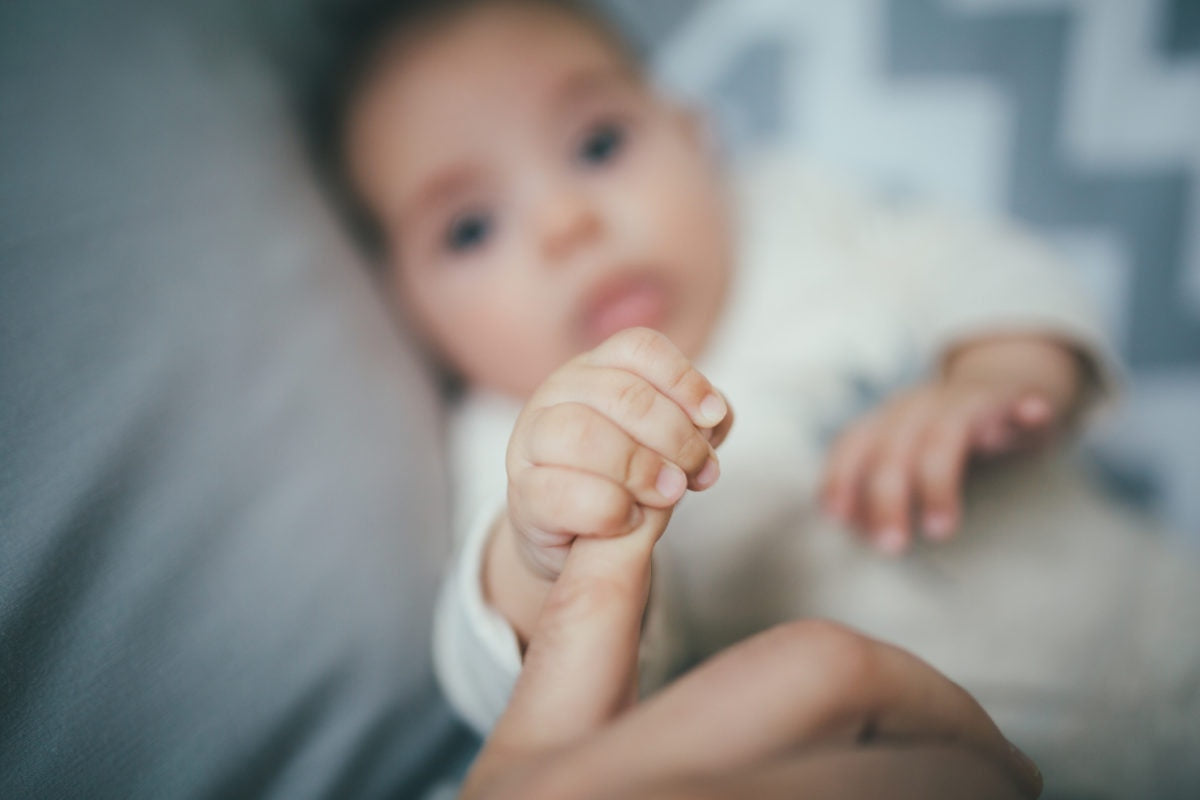Babies who sleep in their parents’ bedroom at four months old have shorter sleep stretches than their counterparts who sleep in their own bedrooms, according to a study published in the journal Pediatrics. In both scenarios, babies slept in a safe, cozy bed like the Ingenuity Dream & Grow Bedside Baby Bassinet.
Researchers at Penn State College of Medicine gave questionnaires to over 250 first-time mothers about their infants’ sleep habits when their children were ages three-four weeks, four months, six months, and nine months. The study randomized the mothers into two groups – those who were encouraged to consider moving their child to sleep in a separate room, and those who were given information about safe sleep habits in regards to Sudden Infant Death Syndrome (SIDS), including the recommendation for babies to sleep in the parents’ room.
The researchers found that despite the differing advice given the two sets of mothers, sleep locations did not differ significantly between either group. What they did find, however, was a difference in how long the infants’ nighttime sleep stretches were. At four months, 62 percent of the infants were sleeping in their own room, and the remainder with their parents. Both sets of babies slept for the same total average amount of time each night. The group who slept independently, however, consolidated their sleep better at four months of age. On average, the independent sleepers slept for a stretch of seven hours and 49 minutes.
The room-sharers longest nighttime stretch was an average of seven hours and three minutes – 46 minutes shorter. The American Association of Pediatrics has long encouraged parents to keep their infant in the same room – but not the same bed – as the parents during the night for at least the first six months, preferably up to a year. The authors of this study believe their findings raise new questions about this recommendation.
They point out that the likelihood of SIDS drops dramatically after six months – 90 percent of SIDS-related deaths occur before then, with the majority occurring between one and four months of age. Recommending room-sharing past this age can lead to poorer sleep without lowering the risk of SIDS. The authors point at problems with the studies that the AAP bases its room-sharing recommendation on.
The first study the AAP cites in its recommendation found that infants who died of SIDS at over four months of age were actually more likely to be room-sharing. The second study dated from the 1990s, when babies still commonly slept on their stomachs, a now-known risk factor for SIDS. The third study was small, and focused on infants younger than six months of age.
So will moving babies into their own room by the time they turn four months old result in better sleep for the entire household? It’s difficult to say. Parents of difficult sleepers may find it easier to keep their child next to them in the middle of the night, whereas the moms and dads of babies who naturally sleep for long stretches may feel more comfortable moving them into their own room.
Temperamental differences between the two groups of infants could explain why one group sleeps longer than the other. But it is possible that parents can move their infants into their own room without fearing any increased risk of SIDS earlier than previously thought. In fact, researchers found parents who room-shared actually engaged in risky sleep behaviors more frequently, including allowing blankets or pillows in the sleep area, or bed-sharing.
These practices increase the risk of SIDS, therefore defeating the benefits of room-sharing. The authors recommend that the AAP reconsider and revise its recommendation to room-share through the first year because of the possibility that room-sharing decreases sleep quality and increases unsafe sleep practices.
Ever-shifting advice from leading organizations might cause parents to tune out the latest recommendations. But a good night’s sleep is critical both for childhood development and for the physical and mental health of caregivers as well. Perhaps when the dust settles from this current controversy, parents will have a better understanding of how to maximize their sleep quality without compromising safety.


